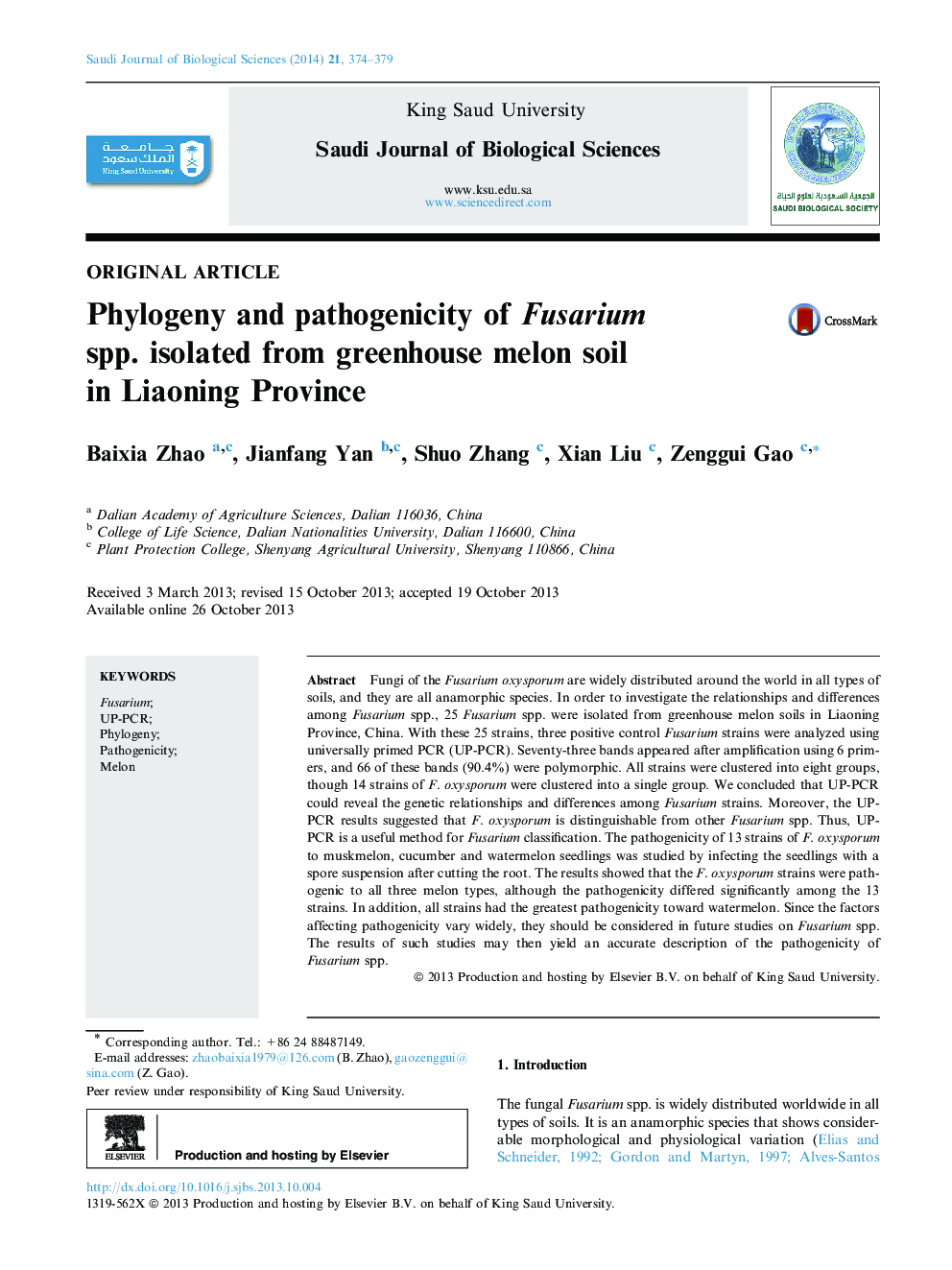| کد مقاله | کد نشریه | سال انتشار | مقاله انگلیسی | نسخه تمام متن |
|---|---|---|---|---|
| 4406470 | 1618684 | 2014 | 6 صفحه PDF | دانلود رایگان |

Fungi of the Fusarium oxysporum are widely distributed around the world in all types of soils, and they are all anamorphic species. In order to investigate the relationships and differences among Fusarium spp., 25 Fusarium spp. were isolated from greenhouse melon soils in Liaoning Province, China. With these 25 strains, three positive control Fusarium strains were analyzed using universally primed PCR (UP-PCR). Seventy-three bands appeared after amplification using 6 primers, and 66 of these bands (90.4%) were polymorphic. All strains were clustered into eight groups, though 14 strains of F. oxysporum were clustered into a single group. We concluded that UP-PCR could reveal the genetic relationships and differences among Fusarium strains. Moreover, the UP-PCR results suggested that F. oxysporum is distinguishable from other Fusarium spp. Thus, UP-PCR is a useful method for Fusarium classification. The pathogenicity of 13 strains of F. oxysporum to muskmelon, cucumber and watermelon seedlings was studied by infecting the seedlings with a spore suspension after cutting the root. The results showed that the F. oxysporum strains were pathogenic to all three melon types, although the pathogenicity differed significantly among the 13 strains. In addition, all strains had the greatest pathogenicity toward watermelon. Since the factors affecting pathogenicity vary widely, they should be considered in future studies on Fusarium spp. The results of such studies may then yield an accurate description of the pathogenicity of Fusarium spp.
Journal: Saudi Journal of Biological Sciences - Volume 21, Issue 4, September 2014, Pages 374–379